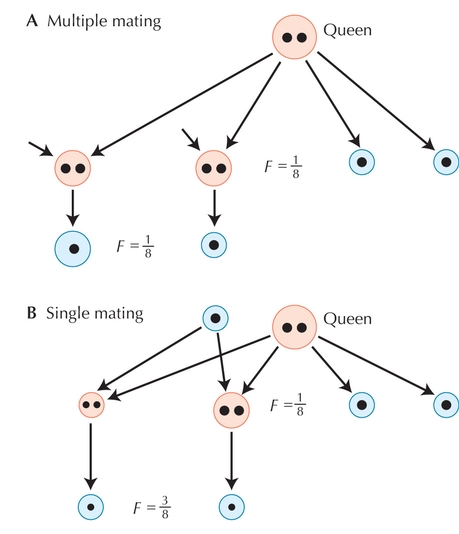Multiple Matings

Figure WN21.10.
(A) When a queen mates many times, her daughters (the female workers) are more closely related to her sons (F = 1/4) than they are to other workers’ sons (F = 1/8). Hence, policing (destruction of eggs laid by other workers) is favored. The chance that a randomly chosen gene in a female worker is derived from the queen, rather than her father, is 1/2; the chance that this gene is the same as the gene in one of the queen’s sons is also 1/2, and so the probability of identity by descent is F = 1/4. Compare this with the relatedness between a female worker and another worker’s sons. The chance that a randomly chosen gene in the worker is derived from the queen is 1/2, as before; the chance that this same gene is passed down to another worker is 1/2; and the chance that it is then passed to the son is 1/2, giving F = 1/8 overall. (B) If the queen mates with only one male, then a gene in a female worker can be identical by descent with a gene in another worker’s son because both genes come from the father, with probability 1/4. Adding the probability of identity via the queen of 1/8, which we calculated in A, F = 3/8. Thus, when a queen mates only once, workers are more closely related to other workers’ sons than to their brothers, and policing is not expected to evolve. We are considering haplodiploid insects here: Males carry one copy of each gene, derived from their mother. ( that in an outbred population [i.e., F = 0], the relatedness in Hamilton’s rule is approximately twice the probability of identity by descent: r = 2FN.)
|

